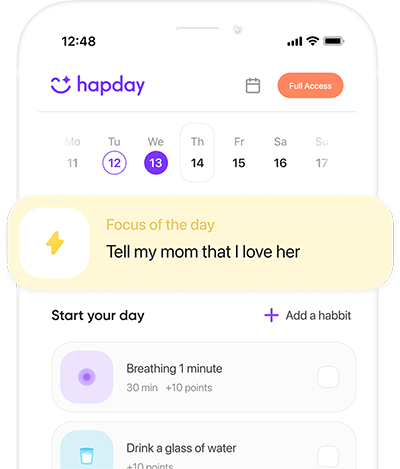Childhood trauma might just be one of the heaviest luggage we lug around. It seeps into our mood, relationships, maybe even makes our bones ache—pardon the dramatics! For Gen Z and Millennial women, craving science-backed, doable self-care practices, journaling daily—yes, every day—presents itself as a subtle yet potent remedy. By embedding journaling habits into our routine, we can become aware of ourselves, sift through our tangled emotions, and slowly start to rewrite our surprising, complex narratives.
Table of Contents
- Understanding the Impact of Childhood Trauma
- The Science Behind Journaling
- Effective Journaling Techniques
- Creating a Journaling Routine
- Addressing Resistance and Challenges
- Measuring Progress and Celebrating Growth
- Conclusion
Understanding the Impact of Childhood Trauma
But before jumping headlong into the nitty-gritty of journaling tricks, let’s pause to grasp how childhood trauma roots itself within us. Traumatic flashes from our younger days can spawn long-term issues, like anxiety, depression, and that gnarly post-traumatic stress disorder (PTSD). I remember this eye-opener article in JAMA Psychiatry which pointed out that folks with histories marked by childhood trauma are more prone to tussle with chronic health bumps and emotional whirlwinds. The first big leap toward patching things up is realizing just how deep these wounds run.
The Science Behind Journaling
Journaling isn’t merely for waxing poetic; it’s been blessed by the scientific community as a genuine way to mend mental fences. According to studies—yes, those peer-reviewed ones!—from the Journal of Psychological Science, pouring our emotions and thoughts onto paper can untangle feelings, snip stress, and sharpen our cognitive blades. In other words, capturing our chaos in writing offers much-needed clarity, helps pinpoint recurring themes, and eventually lets us see the silver lining amidst old, dark clouds.
Effective Journaling Techniques
1. Stream of Consciousness Writing
Kick off your journaling trek with ‘stream of consciousness’ writing—think of it like an unfiltered brain dump! Allow yourself ten or fifteen short minutes each day to scribble without a second thought. This liberating exercise encourages you to peel away facades and get down to the nitty-gritty—what really tickles (or terrifies) you beneath the surface.
2. Prompt-Based Journaling
Here, prompts can be your trusty tour guides. They’ll nudge you toward fresh perspectives by posing questions like:
- “What childhood memory still nudges its way into my today?”
- “What did I feel then, and what do I feel now?”
- “What self-revelations have my past struggles handed me on a silver platter?”
These little nuggets can crack open the door to understanding your inner emotional maze and might help dredge up those buried treasures—your hidden insights.
3. Gratitude Journaling
I know it sounds a bit off-kilter, but focusing on gratitude can create seismic shifts in trauma healing. Jotting down what you appreciate daily redirects your lens from the muck to moments of strength. A UC Davis study showed that folks zeroing in on gratitude logged mood boosts and fewer depressive dips. Just jot down three little things that you’re thankful for every day; they don’t have to be life-changing.
4. Narrative Reconstruction
Rescripting your life’s tales, weaving in threads of growth and resilience, could be a game-changer. Craft a new narrative that nods at the tough stuff but drums up your strengths and minor triumphs. This reframing can stir a powerful drive within you—a reminder you hold the pen.
5. Art Journaling
And if words typically leave you stranded? Enter art journaling. By marrying visual art with written sentiments, it taps into a full-bodied emotional exploration. Quick sketches, doodles, or mashed-up collages in answer to your journaling musings can unlock expansive horizons of healing.
Creating a Journaling Routine
Nestle journaling snugly into your daily rhythm; it’s a non-negotiable for reaping its nurturing goodness. Pick your best time—early bird or night owl? Design a cozy, distraction-free ambiance with maybe a dash of calming tunes.
Addressing Resistance and Challenges
Bumping into walls—emotional?—is par for the course when journaling about those childhood shadows. Treat yourself with the gentleness of an old grandma and look at your discomfort without shaming it. If something genuinely turns your stomach, pause. Maybe even ring up a therapist. Remember, journaling’s a bridge to recovery—not the entire road.
Measuring Progress and Celebrating Growth
Map out your journaling journey; do a self-check from time to time. Thumb through earlier entries to catch shifts in how you churn your thoughts and feelings. Hang a little flag of celebration for small wins—a lightbulb moment or lesser dread. Marking progress solidifies the effects of journaling and rekindles your motivation to hang tight.
Conclusion
Daily journaling gestures toward a balance between structure and leniency in tackling childhood trauma. By embracing practices like stream-of-consciousness writing and gratitude exercises, you’ll learn to mend fences with your past and bolster emotional grit. As you bravely step forward, know this process takes time. And every inch forward counts—seriously.
Get the ball rolling on your healing adventure with journaling. Drop by Hapday to uncover fat heaps of resources and backup. Ready to dive in? Check out Hapday.
References

